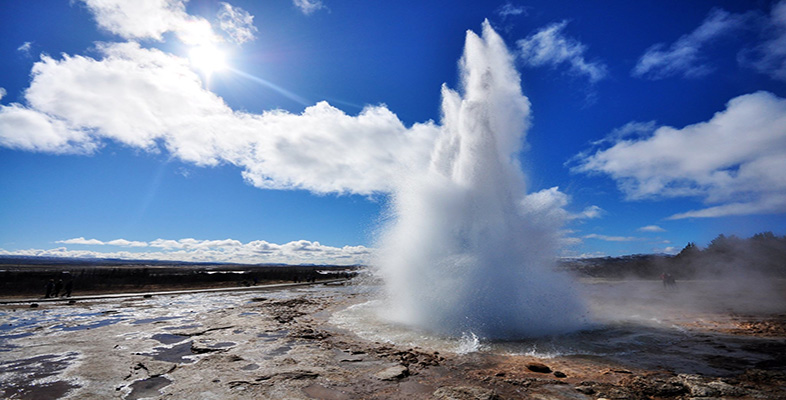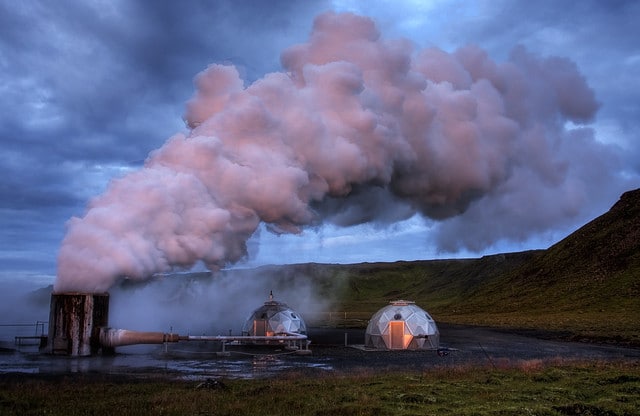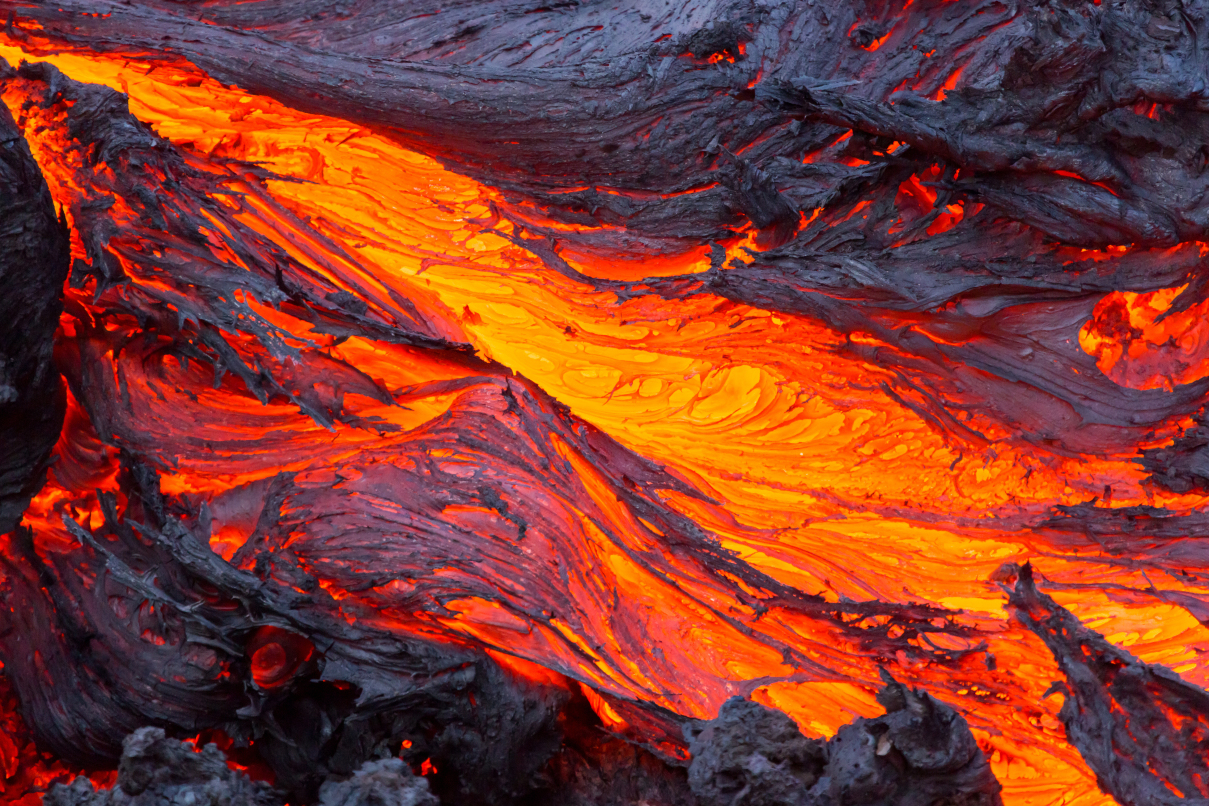Geothermal Energy
Earths Renewable Energy
"The only renewable energy not driven by the sun."

By Nick Bachelder
Geothermal

Below the earths surface, the heat that is continuously produced by radioactive materials breaking down produces more than 50,000 times the energy of all oil and natural gas regions in the world! Most commonly, we can seep cool water into the surface and allow it to resurface after heating as steam. Power plants can drill holes into the ground to capture this steam effectively and use it to derive energy. On the right are examples of how this process occurs in both households and plants.
How does it Function?:


Only 0.4% of Energy is Geothermal in the US


But 27% of Energy is Geothermal in the Iceland: See "Breaking Barriers- Iceland Geothermal"
Advantages of Geothermal Energy Use
It's Ecofriendly!
Because geothermal energy does not require any type of combustion to yield energy, it emits few greenhouse gasses. Unlike fossil fuel, it not only emits no greenhouse gasses, but also uses little electricity and has a very small land footprint (requires little land to operate successfully)
Inexpensive, Efficiant, and Widely Available...
Not only does the realization of geothermal energy provide an inexpensive method of heating and cooling individual households, it also is pretty much universally available. Since earths internal heat is not limited to any specific location, the only limiting factor is a capacity to extract the energy! Additonally, geothermal energy is quite efficient as heat pumps only use 25-50% electricity.

Disadvantages: Geothermal
1. It is particularly hard to determine which areas are conducive to extraction. While earths internal heat is all around the subsurface of the crust, plants must be built in areas of rock that are permeable. Additionally, areas most productive in obtaining geothermal energy are away from urban centers (volcanic areas)
2. The drilling of holes in rock to create geothermal plants can cause surface instability. Additionally, initial installation of the system can be costly, especially for individual households. (Around 25,000)
3. The release of hydrogen sulfide, a rotten egg smelling gas, can be harmful to the environment


Locations That Use Geothermal Are Usually Near Tectonic Boundaries
United States use of Geothermal:
A large majority of the US's use of geothermal energy can be found in the west, particularly in Hawaii and other western states. This can be attributed to the ring of fire and conducive volcanic conditions.
Where Else?
Countries on the border of tectonic plates, like El Salvador, Kenya, the Philippines, Iceland, and Costa Rica, all use geothermal energy to account for more than 15% of energy production.

Sources
- “How Geothermal Energy Works.” Union of Concerned Scientists, www.ucsusa.org/clean_energy/our-energy-choices/renewable-energy/how-geothermal-energy-works.html#.Wnp6P5M-fVp.
-
Rinkesh. “Advantages of Geothermal Energy.” Conserve Energy Future, 13 May 2017, www.conserve-energy-future.com/advantages_geothermalenergy.php.
-
“Where Geothermal Energy Is Found.” Where Geothermal Energy Is Found - Energy Explained, Your Guide To Understanding Energy - Energy Information Administration, www.eia.gov/energyexplained/index.cfm?page=geothermal_where.
-
Rinkesh. “Various Disadvantages of Geothermal Energy.” Conserve Energy Future, 13 May 2017, www.conserve-energy-future.com/disadvantages_geothermalenergy.php.
Geothermal Energy as Renewable Energy
By nickb112511
Geothermal Energy as Renewable Energy
- 105



